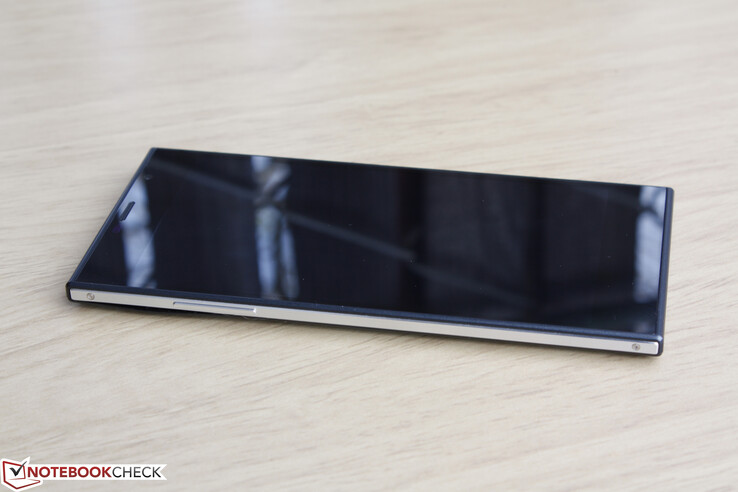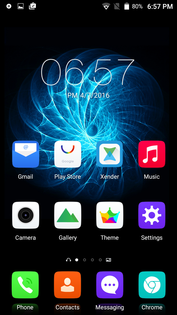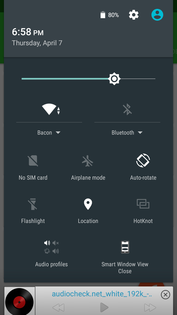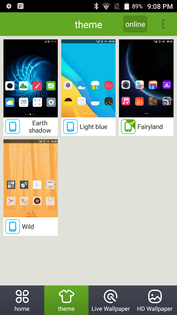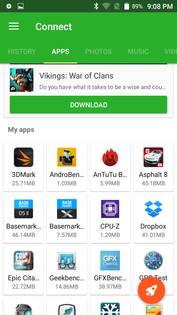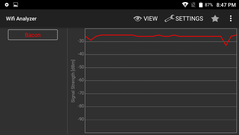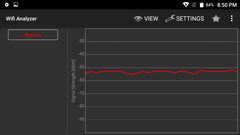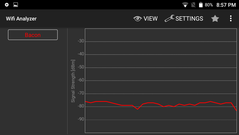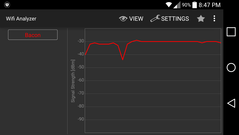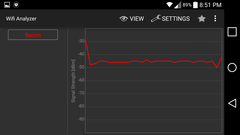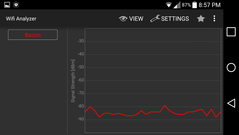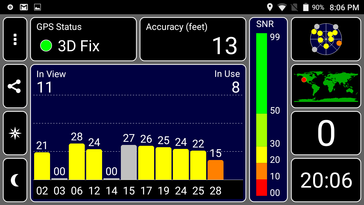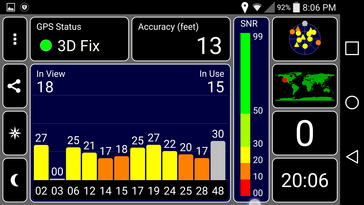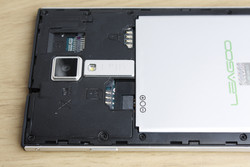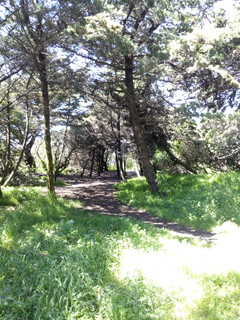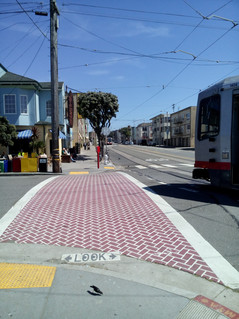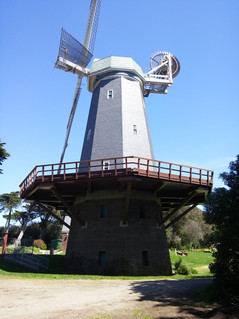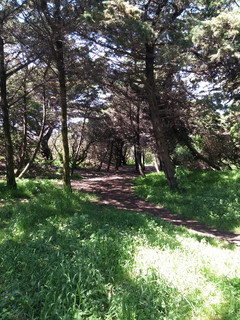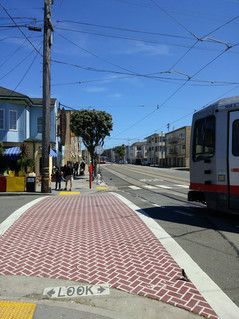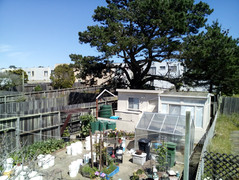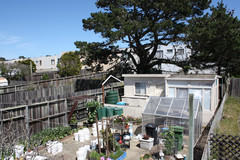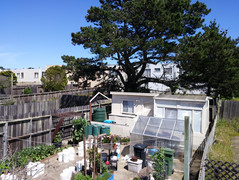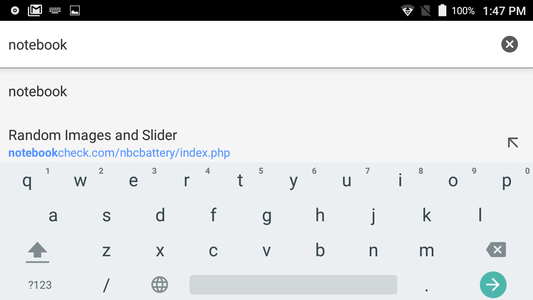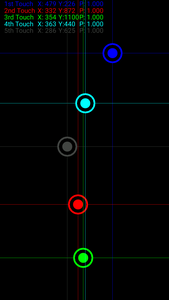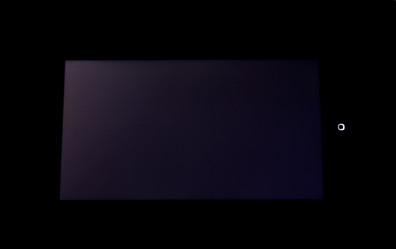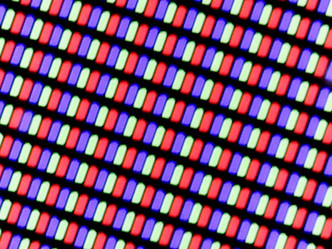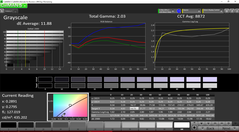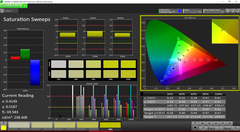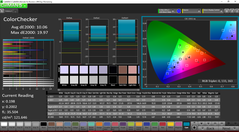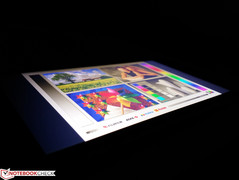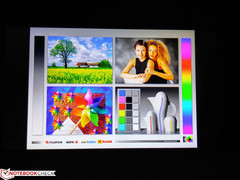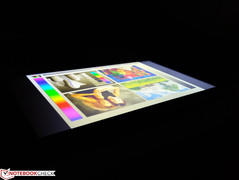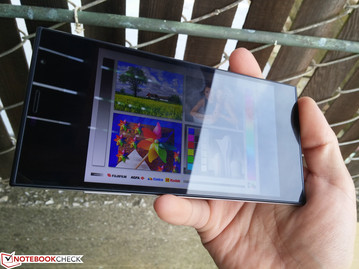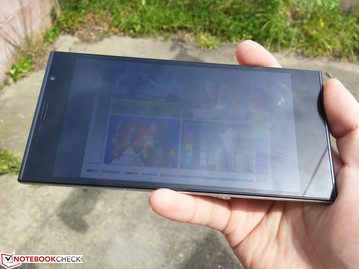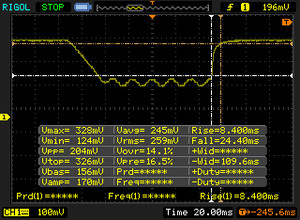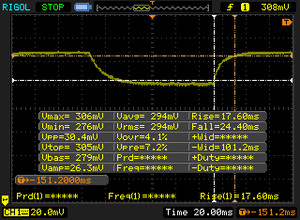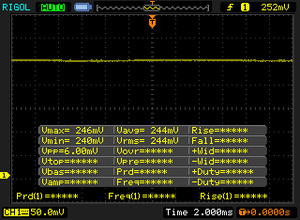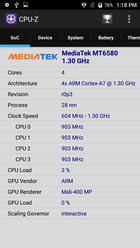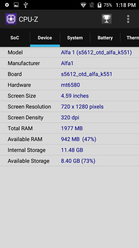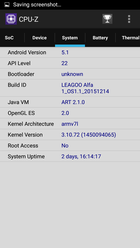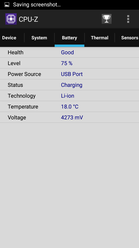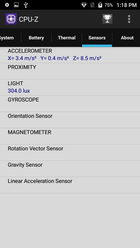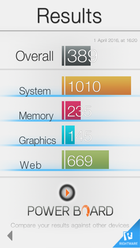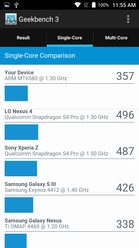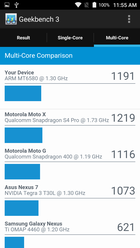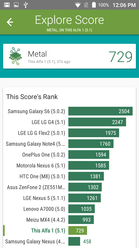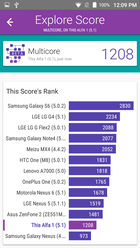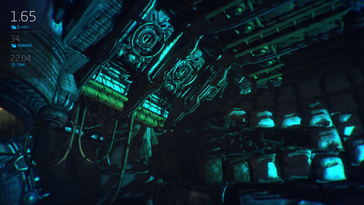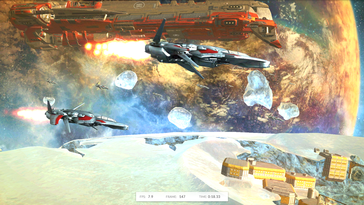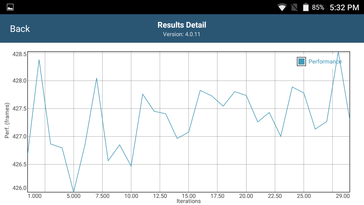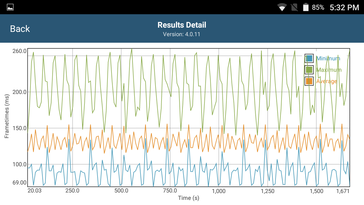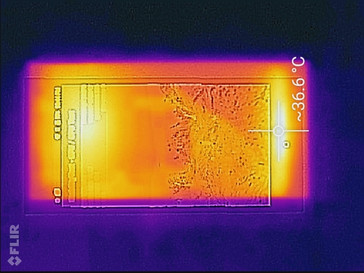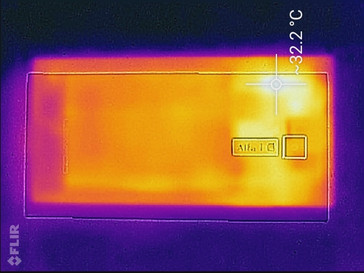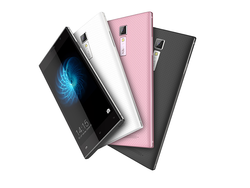Leagoo Alfa 1 Smartphone Review

Chinese smartphone manufacturers are growing aplenty and the recent successes of Huawei and Xiaomi are the carrot-on-a-stick for lesser-known companies.
Leagoo began shipping smartphones back in 2014 and will soon release its Elite X affordable smartphone with a reversible camera. Today, however, we will be looking at the very affordable Alfa 1 smartphone. Its retail price of just under $100 USD with a 5.5-inch screen has us intrigued. In this review, we'll identify and point out the usual cut corners while noting any above-average qualities that the smartphone may bring to the table.
Case
Aesthetically, the Alfa 1 is sharp around the edges and corners with straight lines and minimal curves. The smartphone sports a thinner and flatter look as a result, albeit uninspiring nonetheless. Aside from the aluminum-titanium alloy edges and glass front, the chassis is plastic with a thin and flexible back cover. Slight twisting and creaking of the device can be observed with a moderate amount of applied force, though neither are severe enough to warrant any significant concerns. Applying pressure on the center of the front or back does not result in any notable depressions. Otherwise, the Alfa 1 feels solid to hold and with no unintended gaps or manufacturing defects on our particular test unit.
Three colors are available outside of our Black test unit including White and Rose Gold.
As for size and weight, the Leagoo has very nearly the same length and width as the large ZenFone 2 while being just tenths of a millimeter thicker than the Sony Xperia Z5 Premium and Galaxy S7 Edge. This makes the Alfa 1 a smartphone with a large footprint and overall thin profile. Its weight of 163 g is ordinary and not substantially lighter or heavier than many 5-inch smartphones.
Connectivity
Available interfaces include the usual micro-USB 2.0 port and 3.5 mm audio jack. The micro-USB port itself is recessed quite deeply into the device, so some USB cables may not lock into place correctly and could feel loose as a result. There are no extra features like MHL, IR, or NFC.
Software
Leagoo uses the familiar Android 5.1 Home screen with custom icons and just a few pre-installed bloatware applications including Xender and HotKnot. Custom functions or features specific to the Alfa 1 are not available on this basic phone, so the experience can seem very barebones and similar to a Nexus device without the multi-tasking prowess.
Communication & GPS
WLAN is supported up to 802.11n single-band (2.4 GHz) with no 802.11ac options. When compared directly to the LG G3, its signal strength is roughly the same at the tested distances of 1 meter, 5 meters, and 20 meters away from the source. Strangely, the LG performs a bit better than the Leagoo at 5 meters, but the disadvantages fade away at the two other tested distances.
GPS is sufficient for its intended use as a driving aid as we experienced no issues acquiring and maintaining a position fix. Like most smartphone GPS radios, the Alfa 1 updates its current position less frequently than a dedicated GPS module, so sharp turns and winding trails are pinpointed less accurately.
Telephone & Voice Quality
Supported frequencies include GSM (850/900/1800/1900MHz) and WCDMA (850/1900/2100MHz or 900/2100MHz) with no 4G options. Dual SIM slots (mini-SIM primary and Micro-SIM seconday) are accessible after removing the back cover.
Call quality is clear on full reception and with no static under the AT&T network. Maximum volume from the earpiece could have been louder, which seems to be a trend on cheaper overseas smartphones such as those from Doogee. As for the listener on the other side with the LG G3, our voice was muffled and on the softer side.
Cameras & Multimedia
Quality from the rear 13 MP camera is below average due to a tendency to overexpose and with a green overtone to pictures. Colors appear washed out with loss of detail and are much blurrier than on the flagship LG G3, which also carries a 13 MP rear camera.
Video recording is available up to 1080p24. Quality is unfortunately very muddy that only gets worse with any sort of captured motion.
Input Devices
Touchscreen
For touchscreen performance, we typically check for accuracy and consistency around the edges, corners, and center of the screen. In this regard, the Alfa 1 performs perfectly without any issues despite its very low asking price. Sensitivity is more finicky as light taps are sometimes not registered, so fast typists may want to tap with a bit more force to make sure the system registers each and every time. The capacitive display can recognize up to 5 fingers at a time unlike the 10-point capacitive touchscreens on most mainstream and flagship smartphones. Output is quick and almost as fast as the user can input a key. Haptic feedback is light, but sufficient nonetheless.
The dedicated Android touch keys below the screen are backlit and essentially invisible when the backlight is off. These keys are responsive and without any notable issues. Like all dedicated Android buttons, these free up more space on the screen at the cost of a potentially larger smartphone.
Display
The 720p display lacks the clarity and color accuracy of mainstream and flagship devices. For example, there is a thicker layer of glass protecting the screen and color temperature is noticeably cooler and bluer than it ought to be. This is not to say that display quality is bad as it is merely average and unimpressive.
In terms of brightness and contrast, however, the screen impresses with its measured contrast level of just above 1000:1 to rival mainstream and higher-end smartphones. This confirms Leagoo's claims of a high 1000:1 contrast for the Alfa 1. Maximum brightness is comparatively lower while backlight bleeding is surprisingly even for a budget phone. The corner white clouding in the shot below is simply due to the camera being slightly off-angled.
| |||||||||||||||||||||||||
Brightness Distribution: 91 %
Center on Battery: 432.5 cd/m²
Contrast: 1050:1 (Black: 0.412 cd/m²)
ΔE ColorChecker Calman: 10.06 | ∀{0.5-29.43 Ø4.77}
ΔE Greyscale Calman: 11.88 | ∀{0.09-98 Ø5}
Gamma: 2.03
CCT: 8872 K
| Leagoo Alfa 1 5.5", 1280x720 | Apple iPhone 6S Plus 5.5", 1920x1080 | Honor 5X 5.5", 1920x1080 | Motorola Moto X Force 5.4", 2560x1440 | Sony Xperia Z5 Premium 5.5", 3840x2160 | |
|---|---|---|---|---|---|
| Display | |||||
| Display P3 Coverage (%) | 90.2 | ||||
| sRGB Coverage (%) | 99.5 | ||||
| AdobeRGB 1998 Coverage (%) | 82 | ||||
| Response Times | 21% | 94% | |||
| Response Time Grey 50% / Grey 80% * (ms) | 42 ? | 30 ? 29% | 4.7 ? 89% | ||
| Response Time Black / White * (ms) | 32.8 ? | 29 ? 12% | 0.8 ? 98% | ||
| PWM Frequency (Hz) | 240.4 | ||||
| Screen | 29% | 26% | 27% | 12% | |
| Brightness middle (cd/m²) | 432.5 | 583 35% | 535 24% | 337 -22% | 560 29% |
| Brightness (cd/m²) | 448 | 560 25% | 521 16% | 336 -25% | 541 21% |
| Brightness Distribution (%) | 91 | 91 0% | 85 -7% | 91 0% | 85 -7% |
| Black Level * (cd/m²) | 0.412 | 0.46 -12% | 0.43 -4% | 0.45 -9% | |
| Contrast (:1) | 1050 | 1267 21% | 1244 18% | 1244 18% | |
| Colorchecker dE 2000 * | 10.06 | 3.55 65% | 4.88 51% | 3.99 60% | 9.19 9% |
| Colorchecker dE 2000 max. * | 19.97 | 8.66 57% | 7.07 65% | 15.01 25% | |
| Greyscale dE 2000 * | 11.88 | 3.88 67% | 5.2 56% | 1.66 86% | 10.58 11% |
| Gamma | 2.03 108% | 2.2 100% | 2.26 97% | 2.32 95% | 2.7 81% |
| CCT | 8872 73% | 7280 89% | 7766 84% | 6584 99% | 9760 67% |
| Color Space (Percent of AdobeRGB 1998) (%) | 59.05 | 73.19 | |||
| Color Space (Percent of sRGB) (%) | 92.8 | ||||
| Total Average (Program / Settings) | 29% /
29% | 24% /
25% | 61% /
44% | 12% /
12% |
* ... smaller is better
Outdoor visibility is good under shade due to the IPS screen and sufficiently bright backlight. Direct sunlight will still wash out the display while glare from the glossy panel can never be completely avoided.
Viewing angles are excellent with only slight changes to colors, contrast, and apparent brightness when viewing from extreme angles.
Display Response Times
| ↔ Response Time Black to White | ||
|---|---|---|
| 32.8 ms ... rise ↗ and fall ↘ combined | ↗ 8.4 ms rise | |
| ↘ 24.4 ms fall | ||
| The screen shows slow response rates in our tests and will be unsatisfactory for gamers. In comparison, all tested devices range from 0.1 (minimum) to 240 (maximum) ms. » 88 % of all devices are better. This means that the measured response time is worse than the average of all tested devices (20.2 ms). | ||
| ↔ Response Time 50% Grey to 80% Grey | ||
| 42 ms ... rise ↗ and fall ↘ combined | ↗ 17.6 ms rise | |
| ↘ 24.4 ms fall | ||
| The screen shows slow response rates in our tests and will be unsatisfactory for gamers. In comparison, all tested devices range from 0.165 (minimum) to 636 (maximum) ms. » 66 % of all devices are better. This means that the measured response time is worse than the average of all tested devices (31.6 ms). | ||
Screen Flickering / PWM (Pulse-Width Modulation)
| Screen flickering / PWM not detected | |||
In comparison: 53 % of all tested devices do not use PWM to dim the display. If PWM was detected, an average of 8084 (minimum: 5 - maximum: 343500) Hz was measured. | |||
Performance
An uncommon MediaTek MT6580 SoC powers the Alfa 1 with 2 GB of system RAM, which should be more than plenty considering the low-power 32-bit 1.3 GHz processor. Raw CPU performance is akin to a Snapdragon 400 class SoC (as found on budget smartphones like the Lumia 625) and well below that of the more powerful Snapdragon 600 series, especially in single-threaded operations according to Linpack. Overall system performance according to PCMark is otherwise in the same ballpark as other very inexpensive Android devices like the Doogee Nova Y100X.
System performance is smooth during low loads, but multi-tasking between demanding apps will bring the Alfa 1 to its knees. Running the pre-installed Xender app, for example, causes the phone to become very unresponsive. Having multiple tabs in Chrome while jumping back to the Home screen will already result in plenty of frame skips and general slowdown.
| Linpack Android / IOS | |
| Multi Thread (sort by value) | |
| Leagoo Alfa 1 | |
| Xiaomi Mi 4s | |
| Xiaomi Redmi 3 | |
| VChok M9-LTE | |
| CAT S40 | |
| Single Thread (sort by value) | |
| Leagoo Alfa 1 | |
| Xiaomi Mi 4s | |
| Xiaomi Redmi 3 | |
| VChok M9-LTE | |
| CAT S40 | |
| PCMark for Android | |
| Work 2.0 battery life (sort by value) | |
| Samsung Galaxy S7 | |
| Work 2.0 performance score (sort by value) | |
| Samsung Galaxy S7 | |
| Work performance score (sort by value) | |
| Leagoo Alfa 1 | |
| Xiaomi Mi 4s | |
| Xiaomi Redmi 3 | |
| VChok M9-LTE | |
| Doogee Nova Y100X | |
| Samsung Galaxy S7 | |
| CAT S40 | |
| AnTuTu v6 - Total Score (sort by value) | |
| Leagoo Alfa 1 | |
| Xiaomi Mi 4s | |
| Xiaomi Redmi 3 | |
| VChok M9-LTE | |
| Samsung Galaxy S7 | |
| Geekbench 3 | |
| 32 Bit Multi-Core Score (sort by value) | |
| Leagoo Alfa 1 | |
| CAT S40 | |
| 32 Bit Single-Core Score (sort by value) | |
| Leagoo Alfa 1 | |
| CAT S40 | |
| 64 Bit Multi-Core Score (sort by value) | |
| Xiaomi Mi 4s | |
| Xiaomi Redmi 3 | |
| VChok M9-LTE | |
| Doogee Nova Y100X | |
| Samsung Galaxy S7 | |
| 64 Bit Single-Core Score (sort by value) | |
| Xiaomi Mi 4s | |
| Xiaomi Redmi 3 | |
| VChok M9-LTE | |
| Doogee Nova Y100X | |
| Samsung Galaxy S7 | |
| Google V8 Ver. 7 - Google V8 Ver. 7 Score (sort by value) | |
| Leagoo Alfa 1 | |
| Xiaomi Mi 4s | |
| Xiaomi Redmi 3 | |
| VChok M9-LTE | |
| Doogee Nova Y100X | |
| CAT S40 | |
| Browsermark - 2.1 (sort by value) | |
| Leagoo Alfa 1 | |
| Xiaomi Mi 4s | |
| Xiaomi Redmi 3 | |
| VChok M9-LTE | |
| Doogee Nova Y100X | |
| Sunspider | |
| 1.0 Total Score (sort by value) | |
| Leagoo Alfa 1 | |
| Xiaomi Mi 4s | |
| Xiaomi Redmi 3 | |
| VChok M9-LTE | |
| Doogee Nova Y100X | |
| CAT S40 | |
| 0.9.1 Total Score (sort by value) | |
| Leagoo Alfa 1 | |
| Xiaomi Mi 4s | |
| Xiaomi Redmi 3 | |
| VChok M9-LTE | |
| Doogee Nova Y100X | |
| JetStream 1.1 - Total Score (sort by value) | |
| Leagoo Alfa 1 | |
| Xiaomi Mi 4s | |
| Xiaomi Redmi 3 | |
| VChok M9-LTE | |
| Doogee Nova Y100X | |
| Samsung Galaxy S7 | |
| Mozilla Kraken 1.1 - Total (sort by value) | |
| Leagoo Alfa 1 | |
| Xiaomi Mi 4s | |
| Xiaomi Redmi 3 | |
| VChok M9-LTE | |
| Doogee Nova Y100X | |
| Samsung Galaxy S7 | |
| CAT S40 | |
| Octane V2 - Total Score (sort by value) | |
| Leagoo Alfa 1 | |
| Xiaomi Mi 4s | |
| Xiaomi Redmi 3 | |
| VChok M9-LTE | |
| Doogee Nova Y100X | |
| Samsung Galaxy S7 | |
| CAT S40 | |
| WebXPRT 2015 - Overall (sort by value) | |
| Leagoo Alfa 1 | |
| Xiaomi Mi 4s | |
| Xiaomi Redmi 3 | |
| VChok M9-LTE | |
| Doogee Nova Y100X | |
| Samsung Galaxy S7 | |
| CAT S40 | |
| Quadrant Standard Edition 2.0 - --- (sort by value) | |
| Leagoo Alfa 1 | |
| Xiaomi Mi 4s | |
| Xiaomi Redmi 3 | |
| VChok M9-LTE | |
| Doogee Nova Y100X | |
| Smartbench 2012 | |
| Gaming Index (sort by value) | |
| Leagoo Alfa 1 | |
| Xiaomi Mi 4s | |
| Xiaomi Redmi 3 | |
| VChok M9-LTE | |
| Doogee Nova Y100X | |
| CAT S40 | |
| Productivity Index (sort by value) | |
| Leagoo Alfa 1 | |
| Xiaomi Mi 4s | |
| Xiaomi Redmi 3 | |
| VChok M9-LTE | |
| Doogee Nova Y100X | |
| CAT S40 | |
* ... smaller is better
Storage Devices
The internal 16 GB eMMC performs at almost half the speed of the new Nexus 5X in both random and sequential read/write rates. This puts the Alfa 1 in line with other inexpensive smartphones like the Xiaomi Redmi 3. MicroSD is supported up to 64 GB and, unlike the two SIM slots, can be inserted or removed without needing to first take out the battery.
| AndroBench 3-5 | |
| Sequential Read 256KB | |
| Google Nexus 5X | |
| VChok M9-LTE | |
| Leagoo Alfa 1 | |
| Xiaomi Redmi 3 | |
| CAT S40 | |
| Sequential Write 256KB | |
| Google Nexus 5X | |
| CAT S40 | |
| Leagoo Alfa 1 | |
| VChok M9-LTE | |
| Xiaomi Redmi 3 | |
| Random Read 4KB | |
| VChok M9-LTE | |
| Google Nexus 5X | |
| Xiaomi Redmi 3 | |
| Leagoo Alfa 1 | |
| CAT S40 | |
| Random Write 4KB | |
| Google Nexus 5X | |
| VChok M9-LTE | |
| Xiaomi Redmi 3 | |
| Leagoo Alfa 1 | |
| CAT S40 | |
GPU Performance
The integrated ARM Mali-400 MP GPU is outdated and normally only found on very low-end smartphones and tablets in multi-core (MP2 or MP4) variants. Thus, it should be unsurprising to see its 3DMark scores to be over two to three times slower than the Mali-T720 MP2 found in modern mainstream devices like the Galaxy A5 2016.
While unfit for gaming at 1080p, the GPU is still sufficient for the 720p display of the Alfa 1. Asphalt 8 plays well and at stable enough frame rates to be enjoyable. The processor exhibits no throttling when under sustained stress unlike on certain higher-end SoCs that may throttle to reduce core temperatures.
| 3DMark | |
| 1280x720 offscreen Ice Storm Unlimited Physics (sort by value) | |
| Leagoo Alfa 1 | |
| Sony Xperia Z5 Premium | |
| Xiaomi Mi 4s | |
| Samsung Galaxy A5 2016 | |
| LG Bello II | |
| 1280x720 offscreen Ice Storm Unlimited Graphics Score (sort by value) | |
| Leagoo Alfa 1 | |
| Sony Xperia Z5 Premium | |
| Xiaomi Mi 4s | |
| Samsung Galaxy A5 2016 | |
| LG Bello II | |
| 1280x720 offscreen Ice Storm Unlimited Score (sort by value) | |
| Leagoo Alfa 1 | |
| Sony Xperia Z5 Premium | |
| Xiaomi Mi 4s | |
| Samsung Galaxy A5 2016 | |
| LG Bello II | |
| 3DMark Ice Storm Standard Score | 2982 points | |
Help | ||
Emissions
Temperature
Surface temperatures are cool and flat when the system is idling on its Home screen. Maximum stress with the Stability Test app produces hot spots as warm as 38 C on the rear top half of the unit where the PCB will typically be located for a smartphone. The display and edges of the device never become uncomfortably warm for the hands. Other 5.5-inch models like the Honor 5x become warmer at over 40 C when under intensive loads, though it carries more powerful components than the Leagoo.
(+) The maximum temperature on the upper side is 38 °C / 100 F, compared to the average of 35.2 °C / 95 F, ranging from 21.9 to 247 °C for the class Smartphone.
(+) The bottom heats up to a maximum of 38.6 °C / 101 F, compared to the average of 34 °C / 93 F
(+) In idle usage, the average temperature for the upper side is 23.4 °C / 74 F, compared to the device average of 32.9 °C / 91 F.
Speakers
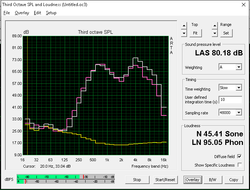
The single speaker on the back of the smartphone is sufficiently loud at maximum volume and does not introduce any static or rattling. Its usefulness outside of speakerphone purposes is limited due to the weak bass and very narrow range. Recordings with an external microphone show poor reproduction of lower frequencies.
Energy Management
Power Consumption
Power draw is notably higher than similarly sized competitors especially when idling and even after taking into account the high energy demand when the smartphone is powered off. Maximum load, however, is less demanding than its powerful competitors, which suggests that the MediaTek SoC is has less efficient power-saving states than Snapdragon and Apple processors.
| Leagoo Alfa 1 Mali-400 MP, , 16 GB eMMC Flash | Apple iPhone 6S Plus A9 / PowerVR GT7600, A9, Apple AP0064K (iPhone NVMe) | Honor 5X Adreno 405, 616 MSM8939v2, 16 GB eMMC Flash | Motorola Moto X Force Adreno 430, 810 MSM8994, 32 GB eMMC Flash | Sony Xperia Z5 Premium Adreno 430, 810 MSM8994, 32 GB eMMC Flash | |
|---|---|---|---|---|---|
| Power Consumption | 41% | 29% | 22% | 9% | |
| Idle Minimum * (Watt) | 2.8 | 0.5 82% | 0.87 69% | 0.96 66% | 0.83 70% |
| Idle Average * (Watt) | 4.1 | 1.9 54% | 2.08 49% | 1.35 67% | 2.36 42% |
| Idle Maximum * (Watt) | 4.1 | 2.2 46% | 2.22 46% | 1.4 66% | 2.42 41% |
| Load Average * (Watt) | 4.9 | 3.2 35% | 5.26 -7% | 6.11 -25% | 7.27 -48% |
| Load Maximum * (Watt) | 5.7 | 6.4 -12% | 6.34 -11% | 9.43 -65% | 9.18 -61% |
* ... smaller is better
| Off / Standby | |
| Idle | |
| Load |
|
Key:
min: | |
Battery Life
Runtimes from the Alfa 1 are just average considering the screen size and 3000 mAh removable battery. Users can expect just under 7 hours of constant WLAN use at a 150 nit brightness (~30 percent) setting or about 3.5 hours of heavy use at maximum brightness. Mainstream and higher-end 5-inch smartphones tend to run longer than the Leagoo under similar conditions despite having more powerful internals and higher resolution panels.
| Leagoo Alfa 1 3000 mAh | Apple iPhone 6S Plus 2750 mAh | Honor 5X 3000 mAh | Motorola Moto X Force 3760 mAh | Sony Xperia Z5 Premium 3430 mAh | |
|---|---|---|---|---|---|
| Battery runtime | 30% | 12% | 44% | 8% | |
| Reader / Idle (h) | 16.8 | 27.6 64% | 17.6 5% | 26.8 60% | 21.3 27% |
| WiFi v1.3 (h) | 6.8 | 8.6 26% | 10.7 57% | 7.1 4% | 6.2 -9% |
| Load (h) | 3.3 | 3.3 0% | 2.4 -27% | 5.5 67% | 3.5 6% |
Pros
Cons
Verdict
The Alfa 1 is as basic as an Android smartphone can get - and that's ok. We're not looking for a fully-featured phone for under $100, so a dependable device that nails down the nuts and bolts while providing an easy-to-see large display should be more than enough. In this regard, the Alfa 1 does its job reasonably well for core users. Its interface, responsiveness, cameras, performance, display quality, battery life, and call quality are all just average or slightly below when compared to costlier mainstream competitors.
Listing all of its missing features (LTE, NFC, MHL, Wi-Fi calling, etc.) would point out the obvious cut corners. Fortunately, build quality is very good considering the price and is arguably more important than any novel extras.
The super low-end Alfa 1 brings no surprises to the table. There is nothing exceptional save for the low price and its allure as an elementary Android device. Core users will appreciate the acceptable build quality and bright backlight while power users will be disappointed by the display quality and general performance.
Leagoo Alfa 1
- 04/09/2016 v5 (old)
Allen Ngo




